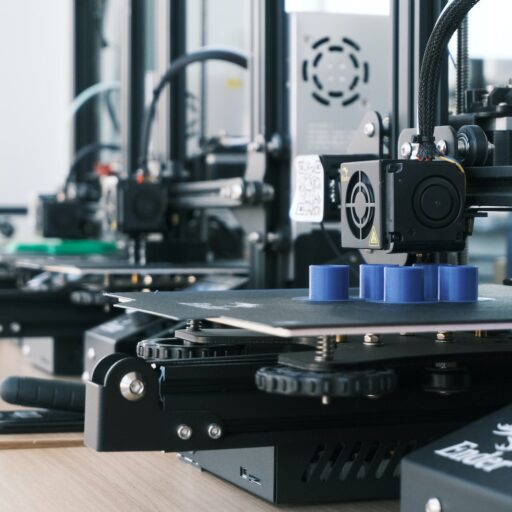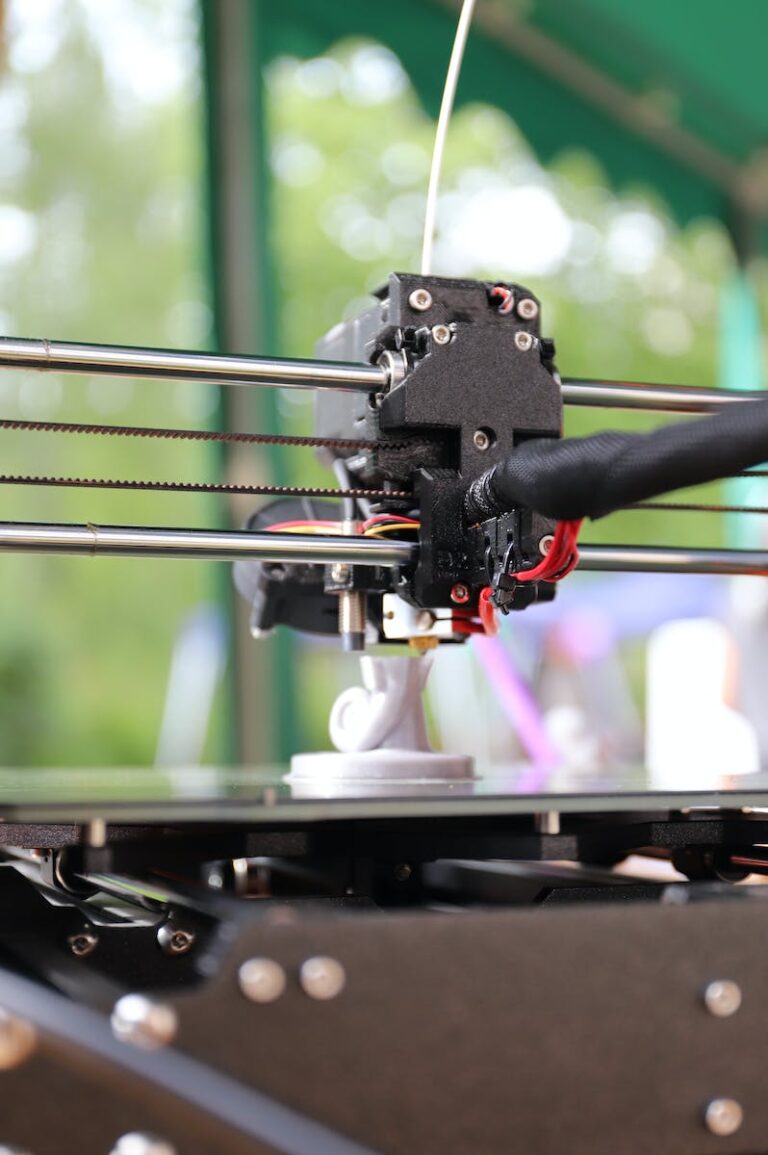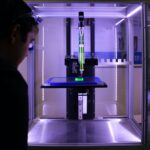Support our educational content for free when you purchase through links on our site. Learn more
[2023] Are 3D Printed Toys Safe for Kids?
As 3D printing technology becomes more accessible and affordable, many parents are wondering if 3D printed toys are safe for their kids. At Best 3D Printer™, we understand the importance of ensuring the safety of children’s toys. In this article, we will explore the safety considerations of 3D printed toys and provide expert advice on how to make informed decisions for your family.
Table of Contents
- Quick Answer
- Quick Tips and Facts
- Background
- Are 3D Printed Toys Safe for Kids?
- Materials and 3D Printed Toys
- Age Appropriateness
- Safety Precautions
- FAQ
- Conclusion
- Recommended Links
- Reference Links
Quick Answer
Yes, 3D printed toys can be safe for kids when certain precautions are taken. It is important to use non-toxic materials, ensure proper design and construction, and follow age-appropriate guidelines. With the right materials and responsible use, 3D printed toys can provide unique and educational play experiences for children.
CHECK PRICE on: Amazon | Walmart | eBay
Quick Tips and Facts
Before diving into the details, here are some quick tips and facts to keep in mind:
- Use non-toxic materials such as PLA (Polylactic Acid) or PETG (Polyethylene Terephthalate Glycol) for 3D printed toys.
- Ensure proper design and construction to avoid sharp edges or small parts that could pose a choking hazard.
- Follow age-appropriate guidelines and supervise children during playtime.
- Regularly inspect 3D printed toys for wear and tear, and discard any damaged or broken pieces.
- 3D printed toys can provide unique learning opportunities and customization options for children.
Background
3D printing, also known as additive manufacturing, is a process of creating three-dimensional objects by layering materials based on a digital model. It has gained popularity in various industries, including manufacturing, healthcare, and education. With the advancement of consumer-grade 3D printers, more individuals have access to this technology for personal use, including creating toys for their children.
Are 3D Printed Toys Safe for Kids?
When it comes to the safety of 3D printed toys, several factors need to be considered, including the materials used, design and construction, and age appropriateness.
Materials and 3D Printed Toys
The choice of materials for 3D printed toys is crucial in ensuring their safety. Two commonly used materials for consumer-grade 3D printers are PLA and ABS (Acrylonitrile Butadiene Styrene).
- PLA: PLA is a biodegradable and non-toxic material made from renewable resources such as cornstarch or sugarcane. It is considered safe for use in food containers and children’s toys. PLA is a popular choice for 3D printed toys due to its low toxicity and ease of use. However, it has a lower melting point than ABS, which can affect the durability of the printed objects.
- ABS: ABS is a strong and durable plastic commonly used in traditional manufacturing. While ABS itself is safe in its solid form, it can release toxic fumes when melted at high temperatures. These fumes can be harmful if inhaled, especially for children. Therefore, it is important to ensure proper ventilation when using ABS for 3D printed toys.
It is recommended to use PLA or other non-toxic materials for 3D printed toys, especially for younger children. Always check the material safety data sheet (MSDS) provided by the filament manufacturer to ensure the materials meet safety standards.
Age Appropriateness
Age appropriateness is an important consideration when it comes to 3D printed toys. Some toys may have small parts that can pose a choking hazard for young children. It is essential to follow age guidelines and supervise children during playtime to ensure their safety.
Safety Precautions
To ensure the safety of 3D printed toys, here are some important safety precautions to keep in mind:
- Material Choice: Use non-toxic materials such as PLA or PETG for 3D printed toys.
- Design and Construction: Ensure proper design and construction to avoid sharp edges or small parts that could pose a choking hazard. Consider using rounded edges and larger sizes for younger children.
- Supervision: Always supervise children during playtime with 3D printed toys, especially for younger children who may put objects in their mouths.
- Regular Inspection: Regularly inspect 3D printed toys for wear and tear. Discard any damaged or broken pieces to prevent potential hazards.
- Ventilation: When using materials like ABS that can release toxic fumes, ensure proper ventilation in the printing area to minimize exposure to harmful substances.
By following these safety precautions, you can enjoy the benefits of 3D printed toys while ensuring the well-being of your children.
FAQ

Why would it not be advisable to use 3D printers around children?
While 3D printers can be a great tool for creativity and learning, there are some potential risks associated with their use around children. These risks include:
- Hot Surfaces: 3D printers involve high temperatures and hot surfaces, which can cause burns if touched. It is important to keep children away from the printer during operation and treat it like any other power tool.
- Toxic Fumes: Certain materials used in 3D printing, such as ABS, can release toxic fumes when melted at high temperatures. These fumes can be harmful if inhaled, especially for children. Proper ventilation is essential when using such materials.
- Sharp Objects: Improperly designed or poorly finished 3D printed objects may have sharp edges that can cause injuries. It is important to ensure proper design and construction to avoid any potential hazards.
Read more about ““Should a Kid have a 3D Printer?” – Expert Advice for Parents …”
Are PLA prints safe for kids?
Yes, PLA prints are generally considered safe for kids. PLA is a non-toxic and biodegradable material made from renewable resources. It is commonly used in food containers and children’s toys. However, it is important to ensure that the PLA filament used is of high quality and meets safety standards.
Read more about “… What Brand of 3D Printer is the Best?”
Are resin printed toys safe for kids?
Resin printed toys require additional precautions compared to filament-based 3D printing. Resin printers use a liquid resin that is cured by UV light to create objects. The uncured resin can be toxic and should be handled with care. Once the resin is fully cured, the printed objects are generally safe for use. However, it is important to follow the manufacturer’s instructions and ensure proper ventilation when using resin printers.
What age is appropriate for a 3D printer?
The age appropriateness of a 3D printer depends on various factors, including the complexity of the printer, the child’s maturity level, and adult supervision. Some 3D printers are designed specifically for children and have simplified features and safety measures. However, it is generally recommended for children to use 3D printers under adult supervision, especially for younger children.
Read more about “… Best 3D Printer for Kids – Unleash Your Child’s Creativity”
Conclusion
In conclusion, 3D printed toys can be safe for kids when proper precautions are taken. It is important to use non-toxic materials, ensure proper design and construction, and follow age-appropriate guidelines. PLA and other non-toxic materials are recommended for 3D printed toys, while materials like ABS should be used with caution due to potential toxic fumes. By following safety guidelines and using responsible practices, 3D printed toys can provide unique and educational play experiences for children.
If you’re interested in exploring more about 3D printing and related topics, check out these articles on Best 3D Printer™:
For more information on the safety of 3D printed items, you can also visit the following references:
Remember, the safety of your children should always be the top priority when it comes to choosing and using 3D printed toys. Happy printing and playtime!
Recommended Links
- CHECK PRICE on: Amazon | Walmart | eBay
- Shop PLA Filament on: Amazon | Walmart | eBay
- Shop ABS Filament on: Amazon | Walmart | eBay
- Shop Resin 3D Printers on: Amazon | Walmart | eBay
- Shop Child-Friendly 3D Printers on: Amazon | Walmart | eBay
- What Brand of 3D Printer is the Best?
Reference Links





